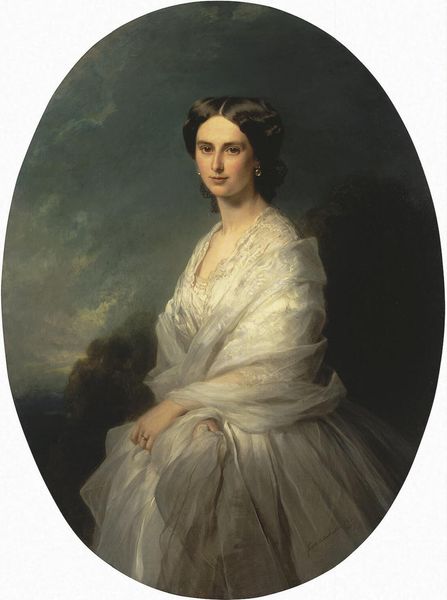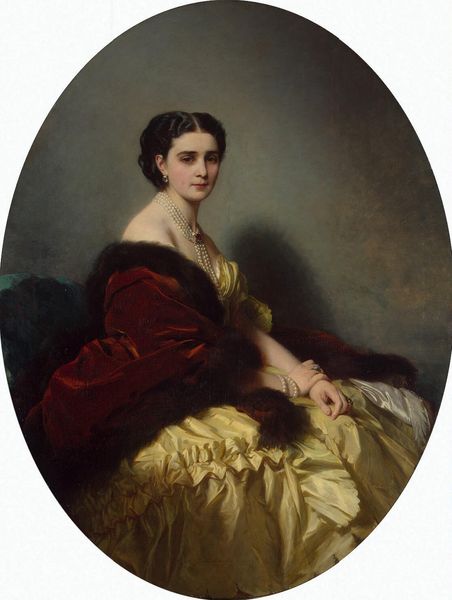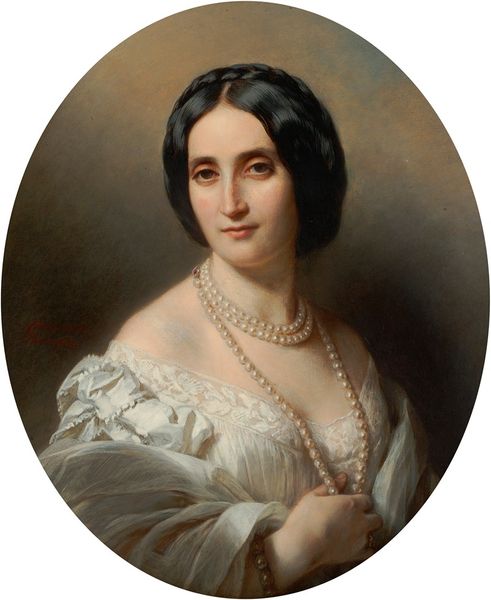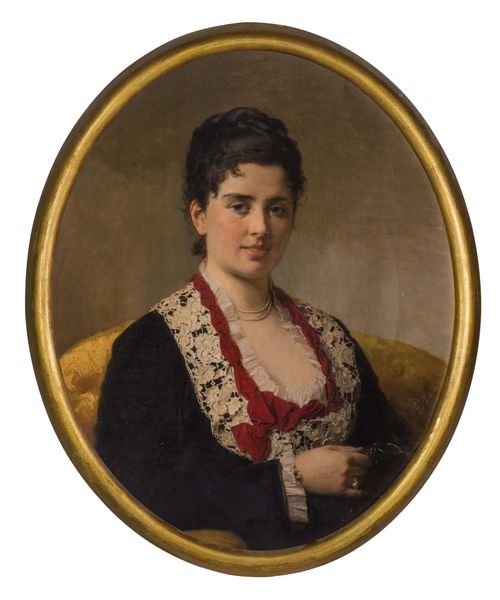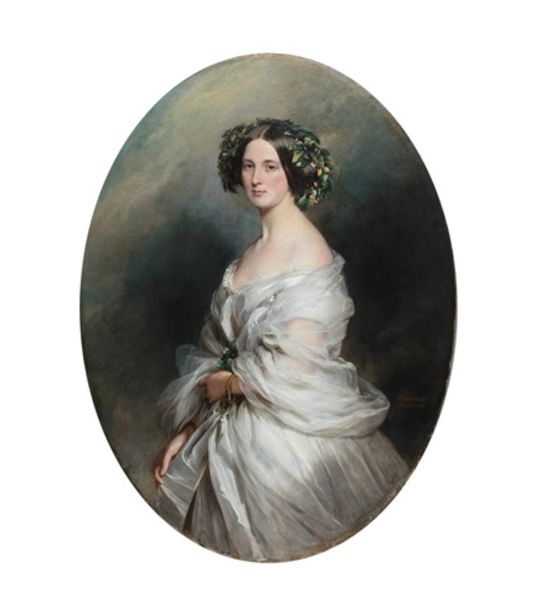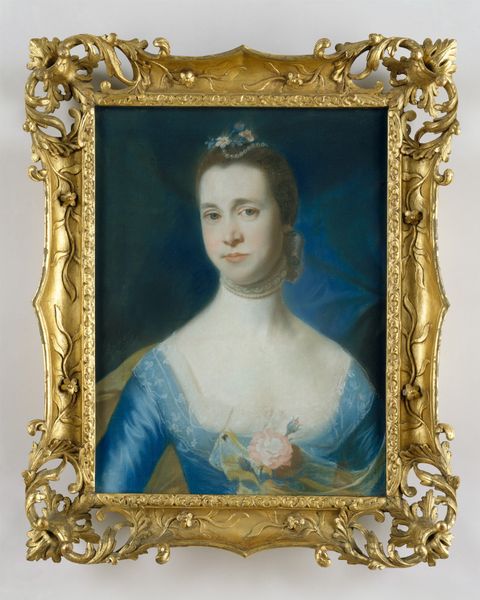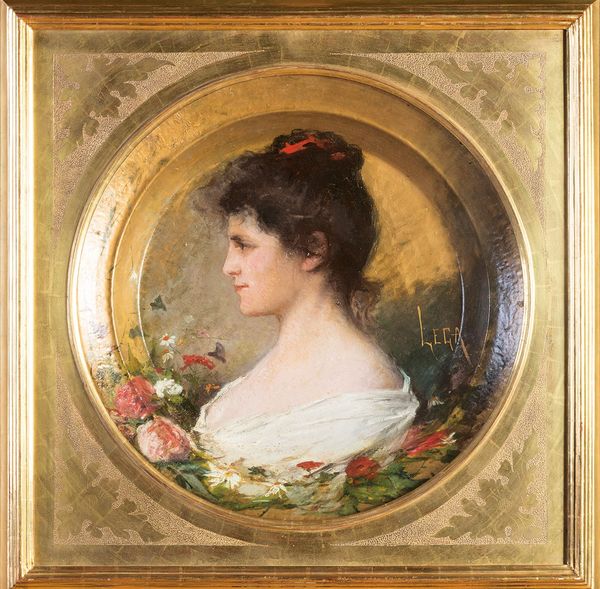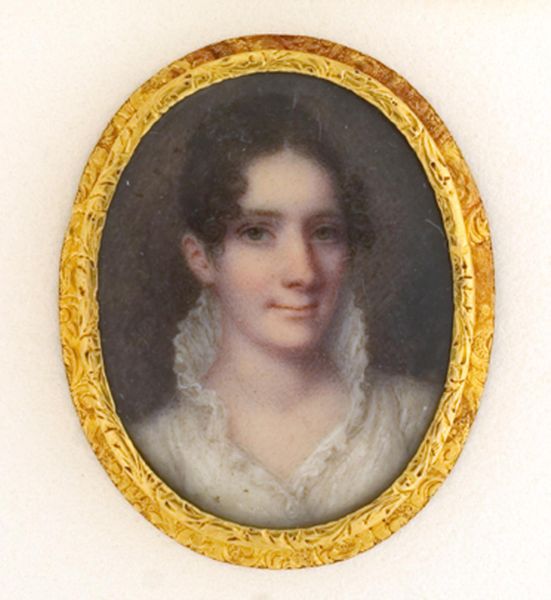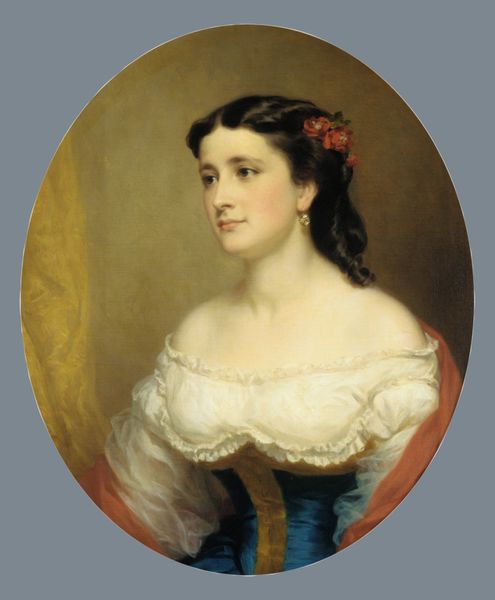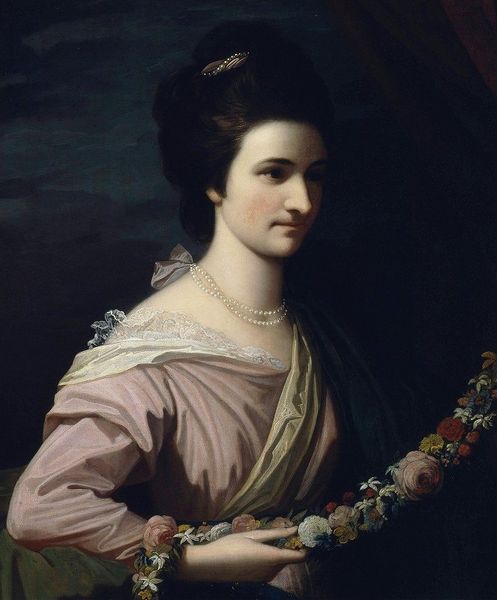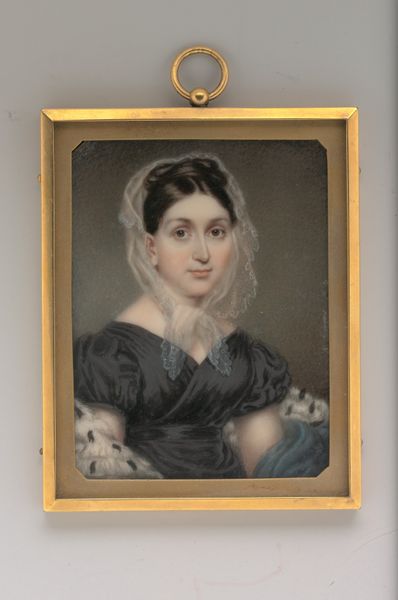
Portrait of a Woman (Marianna Panciatichi, marchesa Paolucci delle Roncole, 1835–1919, or her sister-in-law, Beatrice Ferrari-Corbelli di Reggio, contessa di Lucciano) 1864
0:00
0:00
Dimensions: 25 3/16 x 20 1/2 in. (64 x 52 cm)
Copyright: Public Domain
Editor: This is Michele Gordigiani's *Portrait of a Woman*, painted in 1864. The museum suggests it's either Marianna Panciatichi or Beatrice Ferrari-Corbelli. Painted with oil, there's a dreamy quality to the sitter's expression, framed by an elaborate gilded frame. What’s your interpretation? Curator: The framing itself speaks volumes, doesn’t it? That level of ornamentation underscores the subject’s social standing, immediately situating the portrait within the context of elite 19th-century Italian society. It almost begs the question: who *were* these women and what role did portraiture play in constructing their identity and projecting power? Editor: So, it's less about *who* she is specifically and more about what she *represents*? Curator: Precisely! The hazy, romantic style softens any sharp edges, almost idealizing her. Consider the influence of the Risorgimento on artistic production at this time; there’s a tension here. While Realism was emerging, portraits like this were still commissioned and displayed in ways that reinforced established hierarchies. How does that contrast affect your understanding? Editor: It feels contradictory. There's a desire to depict reality, yet a pressure to uphold idealized standards for the elite. Did the subjects have any agency in this portrayal? Curator: That’s the crucial question, isn't it? While Gordigiani executes his commission, we are left to speculate how much the subject’s own identity shaped the artwork. Artworks of this time became social and political symbols of Italian culture. It highlights how art is rarely produced or consumed in a vacuum. Editor: So looking closely reveals both the artistry *and* the power dynamics at play in the art world and society! Thanks!
Comments
No comments
Be the first to comment and join the conversation on the ultimate creative platform.
